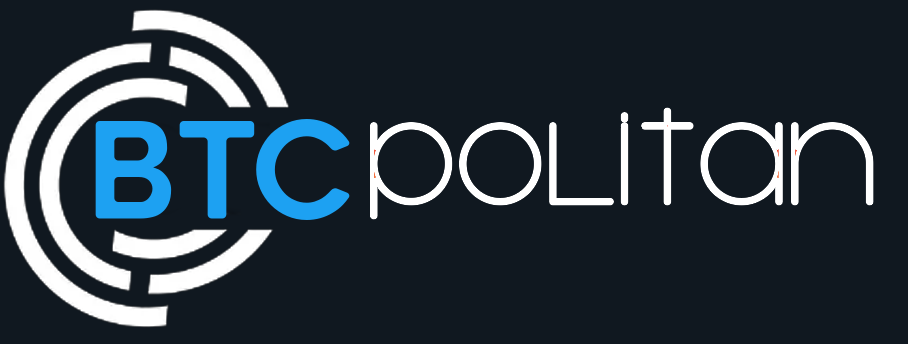Since its inception, Bitcoin, a fascinating phenomenon, has garnered significant attention. Its rise has paved the way for the emergence of numerous digital currencies, often referred to as altcoins. In addition, it has ignited debates surrounding monetary evolution, financial innovation, and the global economic impact of cryptocurrencies. Consequently, Bitcoin holds great intrigue for those eager to delve deeper into this subject.
What Is The Concept Of Bitcoin?

Bitcoin, a digital currency introduced in 2009 by an anonymous individual or group known as Satoshi Nakamoto, has gained recognition for its groundbreaking whitepaper titled “Bitcoin: A Peer-to-Peer Electronic Cash System.” The purpose of this whitepaper was to elucidate the mechanics behind Bitcoin. Additionally, referred to as BTC, Bitcoin possesses distinctive attributes and qualities that set it apart from conventional currencies. These distinguishing factors encompass:
Decentralization: Bitcoin operates independently, free from the control of any governing body such as a government or bank. Its functionality relies on a decentralized network of computers known as a blockchain. This blockchain acts as a shared ledger, meticulously recording every Bitcoin transaction ever conducted.
Digital Currency: Unlike traditional forms of currency, like paper money or coins, Bitcoin solely exists in digital format within the confines of the blockchain.
Cryptography: Bitcoin transactions are safeguards using cryptographic methods—private keys used for signing each transaction to establish ownership and validity.
Pseudonymity: Bitcoin transactions are visible on the blockchain, users’ identities remain unconnected to their wallet addresses. Alphanumeric addresses serve as user identifiers, providing a certain degree of privacy.
Peer-to-Peer: It empower users to send and receive money directly, eliminating the need for intermediaries such as banks. Furthermore, the transparency of the blockchain ledger enables anyone to verify transactions and balances, bolstering trust and security within the system.
Limited Supply: Bitcoin maintains an intentionally restricted supply of 21 million coins, achieving this limitation through its underlying code. This scarcity concept mirrors that of valuable resources such as gold and is employed to curtail inflationary pressures.
Investment and speculation: These are two facets associated with Bitcoin. It serves as a means of storing value, attracting many individuals who hope its price will rise in the future.
Use Cases: Bitcoin finds utility in various use cases, including online shopping and cross-border money transfers. It also provides a hedge against inflation or economic volatility within specific countries.
How Does Bitcoin Function?
To fully comprehend how Bitcoin functions, it is necessary to grasp its key technological components. These essential elements encompass blockchain technology, nodes, wallet management, transactions, and mining processes.
Blockchain: Bitcoin operate using a well-recognized innovative technology known as blockchain. This technology functions as an automatic, publicly transparent, and decentralized database that meticulously records various transactions. It comprises interconnected blocks arranged chronologically, guaranteeing the integrity and transparency of the transaction history.
Nodes: They are computers responsible for downloading and storing a complete copy of the blockchain and play a crucial role in its operation. The network lacks a central authority as nodes collaborate to reach a consensus on the blockchain’s state. Additionally, they validate new transactions and blocks by resolving intricate mathematical problems known as proof-of-work. This meticulous process guarantees that only legitimate transactions are included in the chain while safeguarding it against tampering or modification of transaction history.
Wallet: Bitcoin users store their cryptocurrency in digital wallets. These wallets consist of two cryptographic keys: a public key, which allows them to receive funds, and a private key, used for signing transactions. Wallets come in various formats, such as software, hardware, and paper wallets.
Transactions: They serve as the essential building blocks of the network. These transactions involve transferring value between Bitcoin wallets in the digital realm. Transactions are cryptographically signed using a private key, thereby offering compelling evidence that they originated from the wallet’s rightful owner. Once broadcasted to the network, transactions typically begin confirmation within 10-20 minutes through mining processes.
Mining: A consensus procedure that confirms pending transactions by incorporating them into the blockchain. Additionally, contributors receive new bitcoins as a reward for their computational power allocated to the network. This resource-intensive process requires substantial computational capabilities.
Thus, Bitcoin utilizes cryptographic techniques, distributed computing, economic rewards, and decentralized decision-making to establish a secure and transparent system for digital currency. This synergy enables individuals to effortlessly transfer and receive digital funds without relying on intermediaries. Moreover, its decentralized nature ensures resilience against interference or control by any individual or governing authority.
How Do Individuals Acquire Bitcoins?
There are various methods available for acquiring Bitcoins. It can be used for online purchases, selling goods or services, and exchanging value. Here are some commonly used approaches to procure bitcoins.

Acquiring Bitcoins involves purchasing them from cryptocurrency exchanges. These platforms offer users the convenience of buying Bitcoin using either fiat currencies such as USD, EUR, or GBP, or other cryptocurrencies. Some well-known examples of cryptocurrency exchanges include Coinbase, Binance, Kraken, and Bitstamp. To initiate the process, users create an account on their chosen exchange, undergo identity verification procedures, deposit funds into their accounts, and subsequently place buy orders for Bitcoin at the current market price.
Bitcoin ATMs are machines commonly found in physical locations like convenience stores or shopping malls. These ATMs allow users to conveniently purchase Bitcoin using either cash or credit/debit cards. When interacting with the ATM, users can provide their Bitcoin wallet address and insert cash or a payment card to complete the purchase.
P2P Trading, known as Peer-to-Peer trading, is facilitated through Local Bitcoins, Paxful, and Bisq platforms. These platforms allow direct connection between buyers and sellers. Users have the ability to create listings for buying or selling Bitcoin and negotiate terms with one another. P2P trading accommodates multiple payment methods, including bank transfers, cash payments, and online payment systems.
Bitcoin mining involves the creating new Bitcoins and adding transactions to the blockchain. Upon successfully solving a puzzle, they receive newly minted Bitcoins as well as transaction fees.
Individuals and businesses can embrace Bitcoin by offering goods and services. By providing services, selling products, or accepting donations in Bitcoin, one can easily accumulate this valuable virtual asset.
Bitcoin faucets play an interesting role in obtaining small amounts of Bitcoin. These websites or apps distribute rewards for completing simple tasks or captcha challenges. Although the pieces are relatively small, faucets serve as promotional tools or avenues to introduce people to Bitcoin.
Additionally, there are occasions when cryptocurrency projects decide to distribute free Bitcoin or even launch a new cryptocurrency exclusively for holders of an existing one. This distribution can be part of a network upgrade known as a hard fork or a promotional campaign called an airdrop.
Apart from these methods, individuals may also receive Bitcoin as gifts from friends and family members. Alternatively, they might receive transfers directly from other users within the Bitcoin network. By exploring these different avenues, anyone can begin accumulating their stash of Bitcoin while embracing the exciting world of cryptocurrencies.
Some blockchain networks utilize the Proof of Stake (PoS) consensus mechanism, offering users a way to earn rewards through “staking” their cryptocurrency in a wallet. While this method is not commonly associated with Bitcoin itself, which relies on Proof of Work, it remains an option for other cryptocurrencies.
However, the price of Bitcoin fluctuates greatly, leading to significant value changes within a short period. Individuals must prioritize security when acquiring Bitcoin. Making informed choices about reputable platforms and wallets to safeguard their holdings becomes essential.
How Are Bitcoins Generated?
Bitcoins come into existence through a process known as “mining,” which plays a crucial role in the Bitcoin network. Mining serves two primary purposes: generating new Bitcoins and ensuring the security and verification of transactions on the blockchain. Let’s delve into how this fascinating mining process unfolds.

Miners diligently gather and authenticate transactions from the vast Bitcoin network. To ensure security and integrity, these verified transactions are grouped in a way to form blocks. Each block represents a comprehensive compilation of these transactions.
Miners engage in a competitive process where they strive to solve a complex mathematical puzzle referred to as the Proof of work. This intricate puzzle necessitates miners to discover a specific numerical value called a “nonce.” By combining this nonce with the data from the block and hashing it, they aim to produce a hash value that adheres to certain predetermined criteria. The entire process demands substantial computational power and intensive processing capabilities.
The first miner to successfully solve the Proof of Work (PoW) puzzle earns the privilege of appending the next block of transactions to the Bitcoin blockchain. In recognition of their efforts, they receive two types of rewards. One type is the Block Reward, which consists of a fixed number of newly minted Bitcoins granted to the miner.
The reward for each block during the initial stages of Bitcoin introduction was 50 Bitcoins. However, as an intrinsic feature of Bitcoin’s design, this reward undergoes a halving event approximately every four years. As a result, after the most recent halving in May 2020, miners now earn 6.25 Bitcoins per block. This trend will continue for four years until it reaches the maximum supply cap of 21 million Bitcoins. The second reward is transaction fees, an additional form of income for miners. Miners collect these fees from the transactions included in a block. When users send Bitcoin transactions, they have the option to attach a fee to incentivize miners to prioritize their transactions.
Once the Proof-of-Work puzzle is solved and verified by other network nodes, a new block is added to the existing blockchain. This process extends the blockchain and creates an unbroken and unchangeable ledger of all Bitcoin transactions.
The mining process continues by initiating a new block, where miners engage in competition to solve the subsequent PoW puzzle. This repetitive cycle occurs approximately every ten minutes, leading to the creation of a fresh block and the introduction of additional Bitcoins into the circulating supply. As time progresses and more blocks become part of the blockchain, the overall supply of Bitcoin gradually grows.
However, this increase transpires at a diminishing rate due to halving events. Such methodical issuance of new Bitcoins constitutes an essential element of Bitcoin’s monetary policy as it aims to mirror the scarcity observed in finite resources like gold while simultaneously preventing inflationary pressures on the cryptocurrency.
What is the purpose and significance of Bitcoin?
There are some key reasons behind its creation and the arguments supporting its existence.
- Bitcoin was designed to revolutionize value transfer on the internet, independent of any central authority like a government or bank. By offering heightened security, transparency, and efficiency, it presents itself as a viable alternative to conventional payment systems. Bitcoin emerges as a solution in response to perceived flaws, inefficiencies, or unfairness present in the current financial system.
- It aims to address various pressing issues such as inflation, censorship, corruption, exorbitant fees, and privacy concerns. Governments that resort to printing money as a means of financing their expenses inadvertently devalue their currency, consequently eroding the purchasing power of their citizens. Another problem it tackles is censorship. Some governments or intermediaries possess the authority to hinder, seize, or freeze funds belonging to individuals or organizations with whom they differ ideologically or consider illicit. Corruption also comes into play, as certain governing bodies or middlemen can manipulate the supply and demand of their currency or take advantage of their influence to favor specific groups or interests over others. Furthermore, exorbitant fees for transaction processing—especially when conducted across borders or currencies—pose another challenge. Lastly, Privacy concerns emerge when intermediaries collect personal and financial data from users. This information can be susceptible to risks such as hacking, leaking, or unauthorized sale to third parties.
- Bitcoin transactions can easily take place across borders without the hassle of currency conversion or reliance on international banking institutions. This characteristic renders Bitcoin is incredibly valuable for cross-border trade and remittances. Moreover, some individuals perceive Bitcoin as a digital equivalent to gold – a store of value that lends itself well to long-term investment strategies. On the other hand, others leverage its price volatility for speculative trading purposes.
- Additionally, the existence of Bitcoin is grounded in a philosophy emphasizing individual sovereignty and resistance against centralized control, thereby appealing to those who prioritize personal freedom and autonomy.
The necessity of Bitcoin hinges upon individual perspectives and specific use cases. Some individuals perceive its value and the potential it holds, while others maintain a skeptical stance concerning its long-term sustainability and anticipate possible limitations or disadvantages. Undoubtedly, Bitcoin’s existence has ignited debates surrounding the future of finance, financial innovation, and the role cryptocurrencies play in the global economy. As this technology advances, its practicality and widespread adoption will undoubtedly mold the ongoing narrative regarding its indispensability.
Are There Any Drawbacks Or Challenges Associated With It?
Bitcoin, although groundbreaking and innovative, is not without its flaws. It encounters various limitations and confronts numerous challenges. It is essential to recognize that improvements are required in certain aspects of this technology. Some of the imperfections and challenges associated with Bitcoin include:
Scalability: Bitcoin grapples with processing a limited number of transactions per second, resulting in fluctuating transaction processing times and fees, particularly during periods of high demand. However, continuous efforts are underway to enhance scalability through solutions like the Lightning Network—a layer-2 technology that aims to facilitate faster, more cost-effective off-chain transactions.
Volatility: Bitcoin’s price exhibits high volatility, experiencing substantial fluctuations over short periods. This characteristic poses risks for investors and undermines its stability as a medium of exchange for everyday transactions.
Energy Consumption: Mining Bitcoins involves solving complete computational puzzles and consumes significant electricity. This mining process has raised concerns regarding its environmental impact, particularly when these operations heavily rely on fossil fuels.
Regulatory uncertainty: It poses challenges in the complex landscape of Bitcoin’s regulation. It varies greatly across different countries and jurisdictions. This disparity can result in legal obstacles for users, businesses, and developers operating within diverse environments.
Security Risk: Individual users face security risks such as hacking, phishing attacks, and the loss of private keys. Therefore, securely storing and managing Bitcoin becomes crucial.
Adoption Barriers: Bitcoin adoption faces several challenges that hinder its widespread use. These barriers include the complexity of user interfaces, limited availability of user-friendly solutions, and restricted acceptance by merchants in certain regions.
Network Upgrades and Governance: Decision-making processes regarding network upgrades and changes to the Bitcoin protocol often encounter disputes among participants, making consensus difficult to achieve. Governing Bitcoin effectively remains an ongoing challenge.
Competition: Bitcoin’s dominance is constantly challenged by a vast array of alternative cryptocurrencies known as altcoins. Each altcoin offers its own distinctive features and use cases, with some proponents arguing that newer cryptocurrencies provide enhanced scalability, privacy protections, or other advantages surpassing those offered by Bitcoin.
It is important to acknowledge that Bitcoin is a complex and dynamic system. The developers and users within its community constantly work towards addressing limitations and enhancing functionality. Despite its flaws, Bitcoin has shown remarkable resilience and played a crucial role in popularizing blockchain technology and digital currencies. However, like any technological innovation, it will inevitably encounter challenges and opportunities for improvement as it matures.
Final Words
Bitcoin, a pioneering intervention, has revolutionized our perception of money and transactions. Functioning as a decentralized digital currency, Bitcoin relies on cryptography and blockchain technology to enable its creation and transfer through a network of computers. This innovative alternative to the traditional financial system offers heightened security, transparency, and efficiency while also affording a certain level of privacy and pseudonymity.
Moreover, Bitcoin addresses several persistent issues plaguing the existing monetary framework, such as inflation, censorship, corruption, fees, and privacy concerns. Despite its potential benefits, Bitcoin is not without challenges and risks. The cryptocurrency’s volatility, irreversibility, complexity, and lack of regulation can pose significant hurdles for users and investors. Consequently, careful consideration of these drawbacks becomes imperative to protect financial interests and ensure secure transactions. Moreover, individuals involved with Bitcoin must adhere to the legal framework established by their respective countries.




Comments (No)